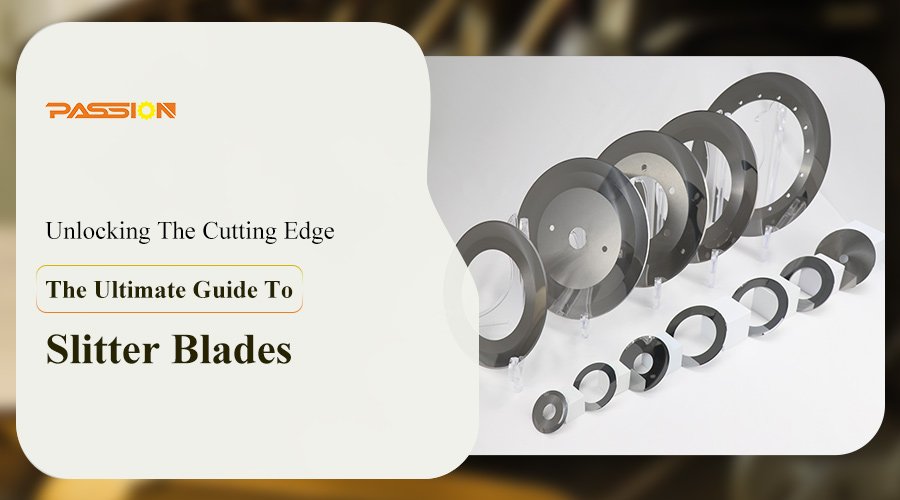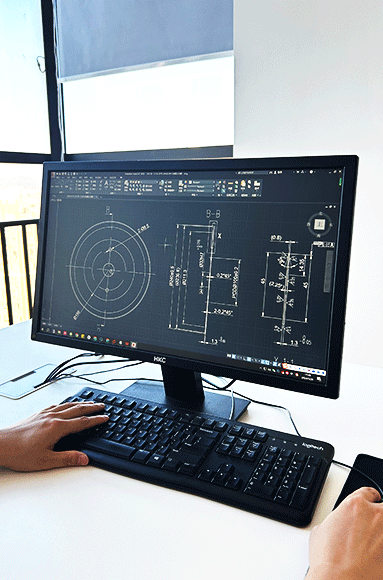In the world of manufacturing and industrial machinery, the quality and efficiency of slitter blades can make all the difference. These small but mighty blades are essential for cutting a wide range of materials with precision and accuracy. However, finding the right slitter blades for each application can be a daunting task. That’s where this ultimate guide comes in.
In this comprehensive guide, we will unlock the secrets of slitter blades, providing you with the knowledge you need to make informed decisions. From understanding the different types of blades available to learning about the key factors to consider when selecting the right blade for your needs, we leave no stone unturned. You’ll also find valuable tips and insights from industry experts, ensuring that you have all the information required to unlock the cutting edge in your production process.
Whether you’re a seasoned professional or just starting out, this guide is a must-read for anyone looking to optimize their slitting operations. So, let’s dive in and discover the world of slitter blades together.
Types of Slitter Blades and Their Applications
Slitter blades come in various types, each designed for specific cutting applications. Some common types include razor blades, shear blades, guillotine blade, crush cut blades, rotary slitter blades and dished slitter blades. Razor blades are ideal for precise and clean cuts on thin materials like paper and film, mainly used in the packaging and printing industry. Shear blades, on the other hand, are suitable for cutting thicker materials such as cardboard and rubber due to their strength and durability. Crush cut blades are used in industries such as foam and textile manufacturing to crush and cut materials like foam and textiles. In the textile industry, rotary slitter blades are often used to cut fabrics into desired widths efficiently. These blades provide a high level of precision and can handle multiple layers of fabric simultaneously. For industries dealing with films and foils, dished slitter blades are the go-to choice, as they can easily slice through these challenging materials without causing damage.
In addition to the common types mentioned, some specialized industries, such as medical device manufacturing, may require custom slitter blades tailored to their specific requirements, like circular slitter blades and dished slitter blades that meet the unique cutting challenges posed by intricate medical components. Circular slitter blades are perfect for continuous cutting processes, while dished slitter blades are designed to handle challenging materials like foils and laminates. Knowing the diverse range of slitter blade types available can help you select the most suitable one for your specific cutting tasks.
Understanding the differences between these types and their applications can help you choose the right one for your cutting needs. It’s also worth noting that matching the type of slitter blade to the material and thickness you are working with, you can achieve optimal cutting results and improve overall efficiency in your production process
Factors to Consider When Choosing Slitter Blades
Choosing the right slitter blades is essential for achieving optimal cutting performance and prolonging the lifespan of your equipment. Several factors should be taken into account when selecting slitter blades, including the type of material being cut, the desired cutting precision, and the speed of the cutting process. Additionally, factors such as blade material, blade geometry, and blade hardness can significantly impact the cutting results.
The type of material being cut plays a critical role in determining the blade type and edge geometry required for the job. For instance, materials like paper and film may require razor blades with a fine edge for clean cuts, while tougher materials like rubber and plastics may demand shear blades with a more robust cutting edge. Understanding the properties of the material being cut is crucial for choosing the right blade that can effectively slice through it without causing damage.
Another important factor to consider is the desired cutting precision. Different cutting applications may require varying levels of accuracy, ranging from standard cuts to intricate patterns. Selecting slitter blades with the appropriate blade geometry, such as blade thickness and angle, can help achieve the desired cutting precision. Additionally, the speed of the cutting process should be considered, as faster cutting speeds may necessitate blades with enhanced durability and wear resistance to maintain cutting performance over time.
The Importance of Sharpness in Slitter Blades
Sharpness is a key factor that significantly impacts the cutting performance of slitter blades. A sharp blade ensures clean and precise cuts, reduces material waste, and enhances overall cutting efficiency. Dull blades, on the other hand, can lead to jagged edges, tearing of materials, and decreased productivity. Maintaining the sharpness of slitter blades is essential for achieving high-quality cutting results and prolonging the lifespan of the blades.
Regular blade sharpening and maintenance are crucial to keep slitter blades in optimal condition. Depending on the cutting frequency and material type, blades may need to be sharpened periodically to maintain their sharp edge. Using proper sharpening techniques and tools, such as sharpening stones or grinding machines, can help restore the sharpness of dull blades and ensure consistent cutting performance. Additionally, proper storage and handling of blades can help prevent damage and maintain sharpness over time.
In addition to sharpening, proper blade alignment and setup are essential for maximizing cutting precision and sharpness. Misaligned blades can cause uneven cutting, leading to jagged edges and material distortion. Regularly inspecting and adjusting blade alignment can help ensure that the blades are positioned correctly for optimal cutting performance. By prioritizing sharpness and implementing effective maintenance practices, you can enhance the cutting efficiency and longevity of your slitter blades.
Best Practices for Maximizing the Lifespan of Slitter Blades is Maintenance and Care
To maximize the lifespan of slitter blades and ensure consistent cutting performance, it is important to follow best practices for blade maintenance and care. One key practice is to regularly inspect blades for signs of wear and damage, such as nicks, chips, or dull spots. Addressing any issues promptly through blade sharpening or replacement can help prevent further damage and maintain cutting precision.
Proper storage of blades is also essential for prolonging their lifespan. Storing blades in a clean and dry environment, away from moisture and contaminants, can help prevent corrosion and maintain blade sharpness. Using protective covers or sheaths when storing blades can further protect them from damage and ensure they remain in optimal condition.
In addition to regular maintenance, implementing a preventive maintenance schedule can help extend the lifespan of slitter blades and prevent unexpected downtime. By establishing a routine maintenance plan that includes blade sharpening, cleaning, and lubrication, you can ensure that the blades remain in top condition and deliver consistent cutting results. Following these best practices can help maximize the lifespan of slitter blades and optimize cutting efficiency in your production process.
Common Problems and Troubleshooting for Slitter Blades
Despite proper maintenance, slitter blades may encounter common issues that can affect cutting performance. Some common problems include blade dullness, edge chipping, and blade misalignment. Dull blades can result in poor cutting quality and increased material waste, while edge chipping can lead to uneven cuts and jagged edges. Blade misalignment can cause cutting inaccuracies and material distortion.
To troubleshoot these issues, it is essential to identify the root cause of the problem. Dull blades may require sharpening or replacement, depending on the extent of wear. Edge chipping can be addressed by inspecting the blade for damage and adjusting cutting parameters if necessary. Blade misalignment may be corrected by realigning the blades and ensuring proper setup for optimal cutting performance.
In some cases, upgrading to higher-quality blades or adjusting cutting parameters, such as blade speed and pressure, can help resolve common cutting problems. Regularly monitoring blade performance and addressing issues promptly can help prevent downtime and maintain efficient cutting operations. By understanding common problems and implementing effective troubleshooting techniques, you can optimize the performance of your slitter blades and improve overall cutting quality.
Innovations and Advancements in Slitter Blade Technology
Advancements in slitter blade technology have led to the development of innovative cutting solutions that offer improved performance and efficiency. One notable innovation is the use of carbide-tipped blades, which provide enhanced durability and wear resistance compared to traditional steel blades. Carbide-tipped blades are ideal for cutting abrasive materials and can maintain sharpness over a longer period, reducing the frequency of blade sharpening.
Another technological advancement is the integration of laser cutting technology in slitter blades, enabling precision cutting of intricate patterns and shapes. Laser-cut blades offer high cutting accuracy and clean edges, making them suitable for industries that require high-precision cutting, such as electronics and medical device manufacturing. The use of laser technology also allows for faster cutting speeds and reduced material waste.
In addition to material and cutting technology advancements, innovations in blade design and manufacturing processes have contributed to the development of slitter blades with improved performance characteristics. Blades with specialized coatings, such as diamond-like carbon (DLC) coatings, offer increased hardness and wear resistance, prolonging blade lifespan and reducing maintenance requirements. These advancements in slitter blade technology continue to push the boundaries of cutting efficiency and precision, enabling manufacturers to achieve higher productivity and quality in their cutting operations.
Selecting the Right Slitter Blades for Your Specific Needs
When selecting slitter blades for your specific cutting needs, it is important to consider factors such as the type of material being cut, the cutting precision required, and the speed of the cutting process. Different types of materials may demand specific blade types and edge geometries to achieve optimal cutting results. For instance, materials like paper and film may require razor blades for clean cuts, while tougher materials like rubber and plastics may necessitate shear blades for efficient cutting.
The desired cutting precision also plays a crucial role in selecting the right slitter blades. Depending on the level of accuracy needed for your cutting applications, you may opt for blades with specific blade geometries and edge angles that can deliver precise cuts consistently. Considering the speed of the cutting process is important as well, as faster cutting speeds may require blades with enhanced durability and wear resistance to maintain cutting performance over time.
In addition to material type, cutting precision, and speed, it is essential to evaluate other factors such as blade material, hardness, and coating when choosing slitter blades. Selecting blades made from high-quality materials and featuring appropriate hardness levels can improve cutting efficiency and longevity. By carefully assessing your specific cutting needs and considering these factors, you can select the right slitter blades that meet your requirements and optimize cutting performance.
Conclusion and Final Thoughts
In conclusion, slitter blades are essential cutting tools that play a critical role in various industries, from packaging to textiles. Understanding the different types of slitter blades available, their applications, and the factors to consider when choosing the right blade is crucial for achieving optimal cutting results and maximizing efficiency. By prioritizing sharpness, maintenance, and proper care, you can prolong the lifespan of slitter blades and ensure consistent cutting performance.
Innovations in slitter blade technology continue to drive advancements in cutting efficiency and precision, offering manufacturers new opportunities to enhance their cutting operations. By following best practices for blade maintenance and selecting the right slitter blades for your specific needs, you can optimize cutting efficiency, reduce material waste, and improve overall productivity in your production process.
In the ever-evolving world of manufacturing and industrial machinery, unlocking the cutting edge with the ultimate guide to slitter blades is key to staying ahead of the competition and achieving cutting perfection. With the knowledge and insights gained from this guide, you are equipped to make informed decisions and elevate your cutting operations to new heights. So, embrace the world of slitter blades, explore the possibilities they offer, and unlock the cutting edge in your production process.



